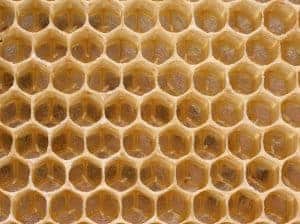It’s valuable to spot eggs, but can often be a challenge
When inspecting your hives, there are many ways to verify your colonies are queen-right, with a healthy, laying queen. One way to know you have a queen, of course, is to find her. At times this is easier said than done, especially if you have an unmarked queen. But even if you do find her how do you know she’s actively laying? Sometimes, queens may not lay well. The colony will often supercede in these cases, but they are not always successful.
An important realization for all new beekeepers is that not finding the queen is neither unusual or problematic. Instead it is important to focus on something equally informative – looking for eggs instead. When you find a healthy number of cells with well-positioned single eggs, this is a sign that a queen is in the colony and actively laying within the last 3 days. This means that instead of having to look through frame to find the queen, you can accomplish the same goal by simply looking for recent eggs.
Keep in mind however, that if you see multiple eggs laid in a single cell and/or they are not attached to the bottom of the cell, you probably have laying workers on your hands. This will need to be rectified, since that suggest there is no laying queen. These worker-laid cells are destined to become drones, since there is no queen to fertilize the eggs necessary to create worker bees.

But how to see these eggs? Honey bee eggs are extremely small and, even you have great vision, they can be tough to see. These tiny eggs are white, so if you use plastic foundation in your brood chambers black foundation is suggested. In addition, newer comb lets more light into the cells and makes the eggs easier to see.
Inspect on a sunny day and hold the frame so the sunlight shines in the cells from over your shoulder. This will illuminate the bottom of the cell and hopefully those eggs as well. Finally, for those of us whose vision isn’t quite what it used to be, having a pair of lighted magnifying glasses can be very helpful.
Finding a queen crawling over comb and inspecting cells is always an exciting and special moment. But t can be time-consuming to find her, especially with multiple hives. Finding the queen merely to establish that you have a laying queen is not required. And since eggs don’t move about the hive like that sometimes-elusive queen, they can be an easier, albeit smaller, target on which to focus.
No matter whether you choose to find the queen or just look for eggs, either are skills all beekeepers should have up their sleeves.
